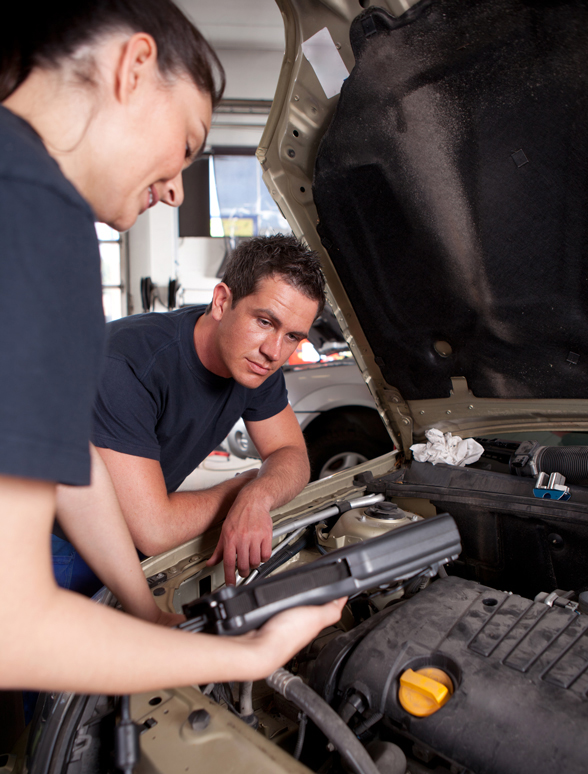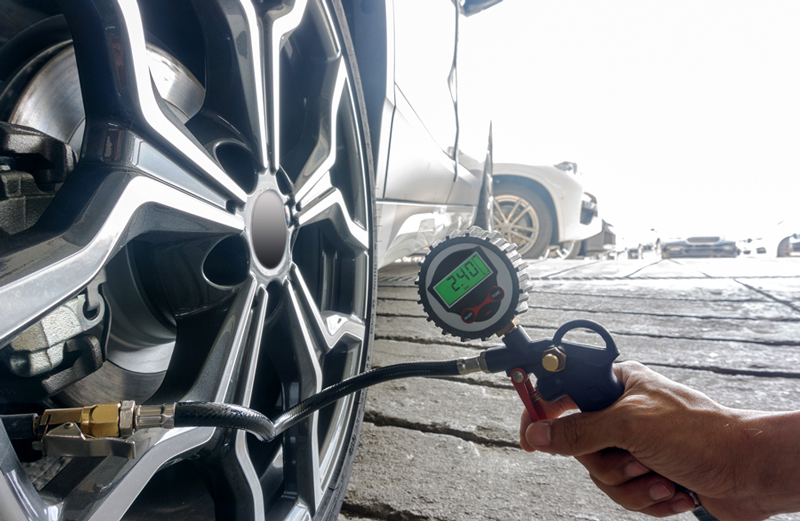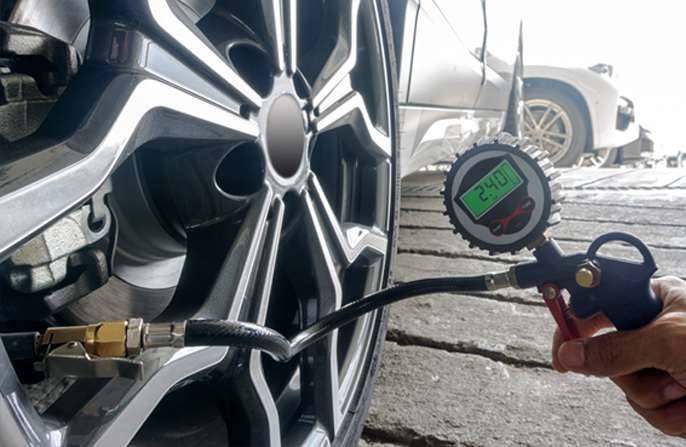By Tom Holden
Safety in commercial transportation doesn’t happen by accident: It starts with everyday habits that drivers and fleet managers build into their routines. From the first click of a seat belt to the last walkaround with a flashlight, the decisions made daily by drivers, technicians, and safety managers form the backbone of your fleet’s performance, reliability, and legal resilience.
 The ripple effects extend beyond the yard: Plaintiffs’ attorneys routinely subpoena inspection records after a crash. A complete, legible Driver Vehicle Inspection Report (DVIR) signed by both driver and mechanic has shut down more than one negligence claim before it reached a jury.
The ripple effects extend beyond the yard: Plaintiffs’ attorneys routinely subpoena inspection records after a crash. A complete, legible Driver Vehicle Inspection Report (DVIR) signed by both driver and mechanic has shut down more than one negligence claim before it reached a jury.
While this article focuses on your larger vehicles, it can easily be applied to the rest of your fleet to devise or add to your safety checklist for your chauffeurs.
The Daily Safety Net: Two Walkarounds Save Lives
Commercial vehicle safety is built on a walkaround routine so ordinary that seasoned drivers sometimes forget how radical it was when federal rule writers first inked it into law. Pre-trip (49 CFR §396.13) and post-trip (49 CFR §396.11) inspections require the operator to prove that the vehicle is road-ready and to document anything that is not. Those pages in the DVIR are more than paperwork, they’re the first link in the chain that prevents a multi-ton vehicle from becoming an unguided missile on the highway.
Inspection programs work because mechanical failures, though relatively rare, are disproportionately deadly when they do occur. In the FMCSA Large Truck Crash Causation dataset, vehicle-related causal factors appear in fewer than 5% of police reports. Yet, when they do, the crash severity index jumps sharply. The Commercial Vehicle Safety Alliance’s 2024 International Road Check—a 72-hour blitz that sampled nearly 49,000 vehicles—tells the same story: 23% of vehicles were placed out of service for critical mechanical defects. Tires alone accounted for 20.8% of the total, second only to brakes.
 Think of these two inspections as the bookends for every duty shift. The pre-trip is a predictive screen: Tighten the loose lug, top off the leaking hub oil, discover the broken spring bolt now—while the shop is 10 yards away and the clock is not yet ticking. The post-trip is a forensic sweep: What changed while you were on the road? Electrical connectors shake loose, and tires cook on hot asphalt. Logging those discoveries in a DVIR amplifies their value, because the next driver begins his shift with full situational awareness, and the maintenance department has a written, time-stamped punch list. Capturing that new damage turns a potential roadside emergency into a scheduled repair.
Think of these two inspections as the bookends for every duty shift. The pre-trip is a predictive screen: Tighten the loose lug, top off the leaking hub oil, discover the broken spring bolt now—while the shop is 10 yards away and the clock is not yet ticking. The post-trip is a forensic sweep: What changed while you were on the road? Electrical connectors shake loose, and tires cook on hot asphalt. Logging those discoveries in a DVIR amplifies their value, because the next driver begins his shift with full situational awareness, and the maintenance department has a written, time-stamped punch list. Capturing that new damage turns a potential roadside emergency into a scheduled repair.
Inspections also influence behavior. Drivers who know that the company reviews DVIRs are more likely to report near misses. Technicians who spot pattern failures on reports can recommend preventive part changes. Safety managers who track DVIR data can tailor training to real-world risks instead of relying on anecdotes.
What an Effective Pre-Trip Looks Like in 2025
The inspection is going to take minutes to ensure a safe ride. Modern checklists balance thoroughness with muscle memory efficiency:
❱ Cab section: Seat belt integrity, dash warning lights, electronic logging device readiness
❱ Engine compartment: Fluid levels, belt condition, loose or missing fasteners
❱ Steer axle and tires: Tread depth, inflation, hub oil, kingpin free-play
❱ Brake system: Slack adjuster stroke, air-line abrasion, air loss rate
❱ Lighting and electrical: Marker lamps, ABS fault lights, pigtail seating
Post-Trip: The Under-Taught Champion
The post-trip’s superpower is heat. A brake drum that warped on a mountain grade is still glowing when the driver parks; an underinflated tire that felt normal at 4 a.m. may hiss audibly at 5 p.m. FMCSA auditors consistently find that fleets with formal post-trip sign-off have 30% fewer “running-defect” citations than fleets that rely solely on the next morning pre-trip. The cost? Three minutes with a flashlight and a clipboard.
Why Tire Inspections Deserve Obsession
During CVSA’s 2024 International Road Check, tires accounted for one out of every five vehicle out-of-service citations, outpacing issues with lights and even many brake categories. To borrow a phrase from racing, the tires are the only part of the vehicle that actually touches the ground. Give them four minutes of respect, and they will give you many hours of safe, quiet, fuel-efficient miles.
Failure Modes You Can Prevent
❱ Chronic under-inflation: Every 10 psi below spec creates roughly a 1% drop in fuel economy and increases casing flex, generating internal heat.
❱ Overloading or uneven loading: This shifts excess weight to one axle end, pushing flexing temperature past the rubber compound’s design limit.
❱ Impact damage: Curb strikes bruise inner plies that may later rupture in a heat-soaked climb.
❱ Aging and UV exposure: Ozone cracks in a steer tire can propagate quickly from bead to sidewall.
❱ Improper repair: Plug patches in the sidewall leave hidden stress risers that become zipper ruptures under full load.
A catastrophic blowout’s timeline is largely silent. Air can bleed slowly through a cracked valve core for hours while the cab stays quiet. That is why the gauge, not the tire thumper, is the professional’s tool of choice. One carrier replaced the traditional tire thumper with mandatory gauge checks, feeding the data into its maintenance management system. On-road tire failures fell 42% in the first year, while fleetwide fuel economy improved 0.7 mpg, saving them nearly $2 million annually. The return far outweighed the extra payroll minutes spent on diligence.
A 10-Step Tire Inspection That Catches 95 Percent of Defects
1. Use a calibrated digital gauge on every valve.
2. Scan the tread width for feathering (steering misalignment) and cupping (suspension bushing wear).
3. Measure tread depth: 4/32-inch minimum on steers, 2/32 on drives and trailers.
4. Look for foreign objects: Nails and screws often lodge between treads rather than in them.
5. Flex the sidewall with a gloved hand; hidden cord breaks reveal themselves as soft spots.
6. Check valve stem caps: The 99-cent green cap is a secondary air seal.
7. Verify matched duals: More than a half-inch circumference mismatch causes drag and differential heating.
8. Read the DOT date code: Retire steers at 6 calendar years regardless of tread. Large carriers often make this standard practice after a series of high-profile bus rollovers.
9. Observe hub oil levels: A low sight glass means heat and loose preload.
10. Listen for audible leaks once the tire has cooled. Road noise masks what is obvious in a quiet yard.
Seasoned drivers perform those 10 steps in roughly 4 minutes per axle group. Fleets that use automatic inflation or telematics TPMS systems let drivers focus on damage detection while electronics monitor pressure drift in real time. Most importantly, when drivers see their reports trigger real repairs, they keep reporting. When a bad recap goes back on the rim, they tend to stop writing reports altogether.
Emerging Technology: Intelligent Tires and Load-Cell Axles
FMCSA’s current research roadmap includes longitudinal studies of weight distribution and intelligent tire technology—embedded sensors that read pressure, temperature, and even ply strain 50 times per second. As costs fall, expect a future where the post-trip reports auto populate with live tire health scores.
Bottom Line Truths
The biggest takeaways I leave you with is that regulatory compliance is the floor, not the ceiling; the risk management benefits far outweigh the cost of fines. Culture beats the clipboard: When inspections are tied to coaching, incentives, and fast repairs, drivers embrace them; when they feel like busy work, they get pencil whipped. Finally, inspections are the cheapest form of insurance a fleet will ever buy—as long as you are acting on them. [CD0725]
Thomas Holden is the owner and ceo of Transportation Advisors and EZ-DrugTest. He can be reached at




